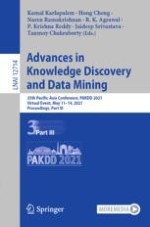2021 | Buch
Advances in Knowledge Discovery and Data Mining
25th Pacific-Asia Conference, PAKDD 2021, Virtual Event, May 11–14, 2021, Proceedings, Part III
herausgegeben von: Prof. Kamal Karlapalem, Hong Cheng, Naren Ramakrishnan, R. K. Agrawal, P. Krishna Reddy, Dr. Jaideep Srivastava, Assist. Prof. Tanmoy Chakraborty
Verlag: Springer International Publishing
Buchreihe : Lecture Notes in Computer Science
